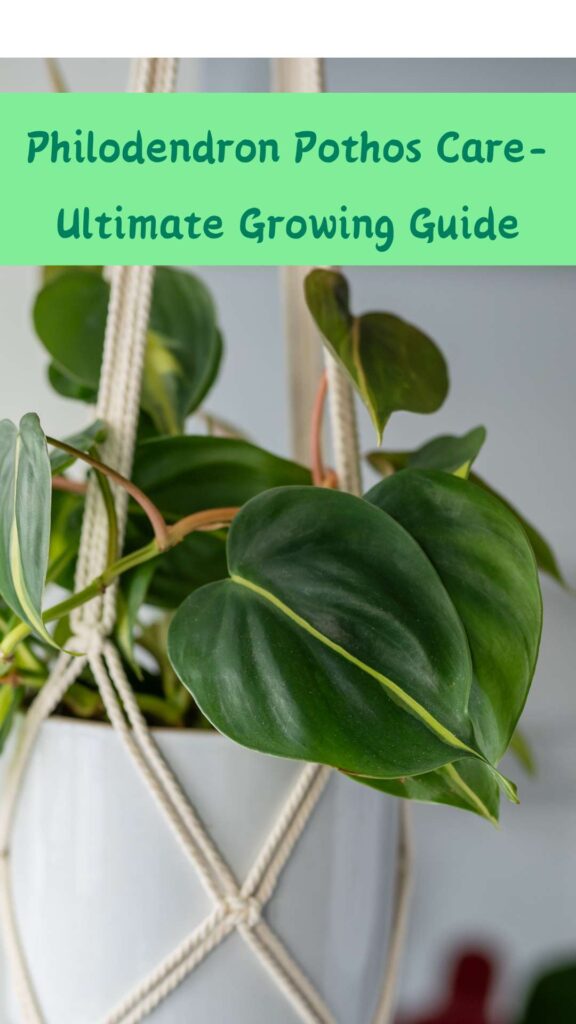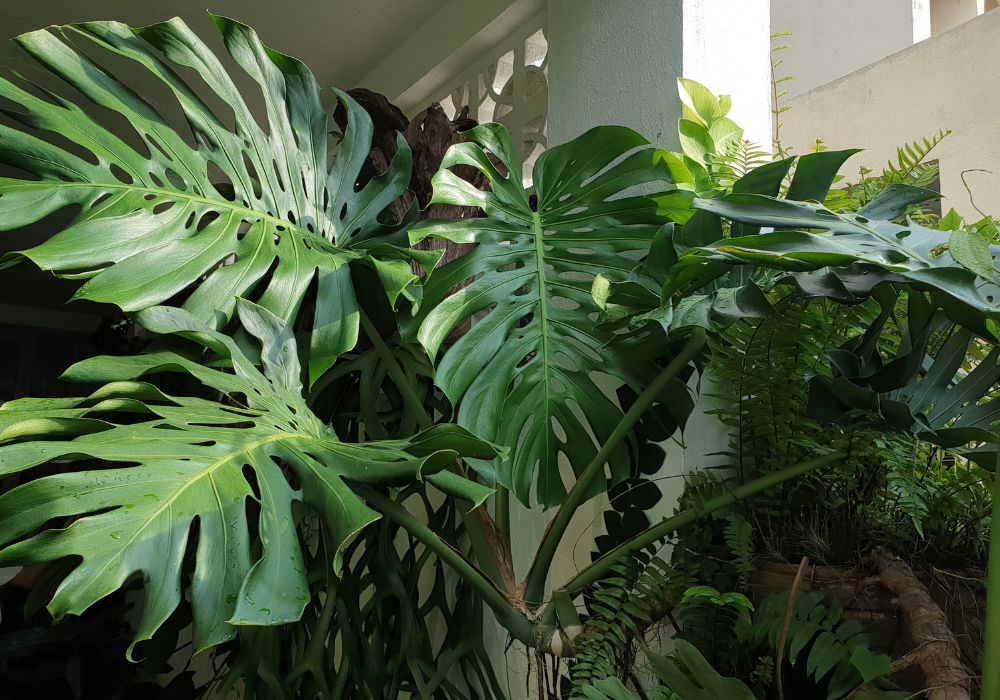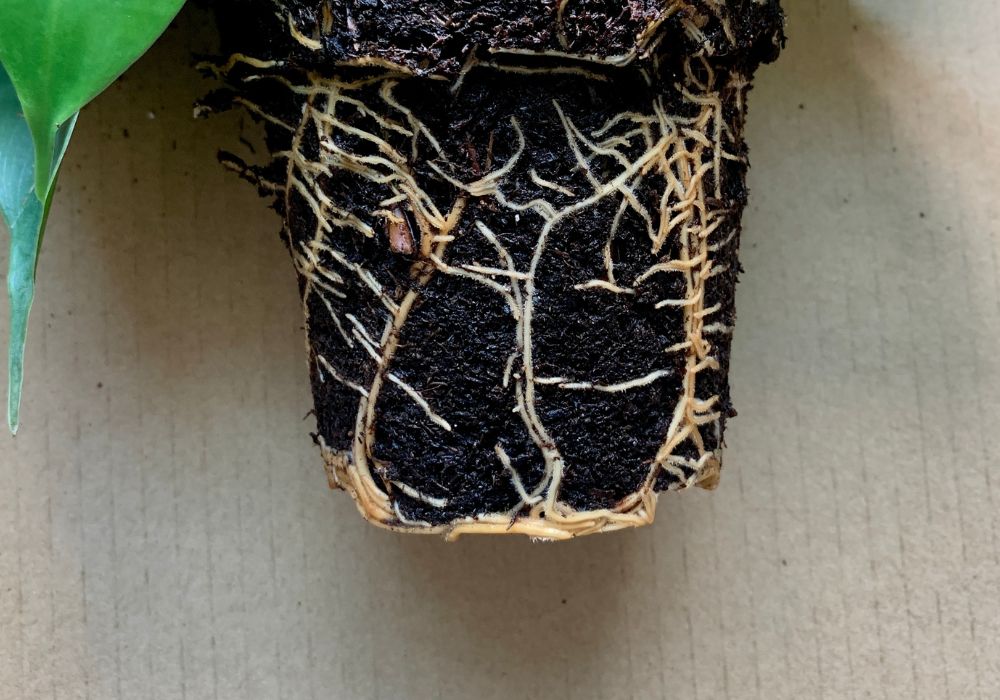
When selecting a spot for your Philodendron Pothos, consider areas with bright, indirect sunlight. These plants thrive in moderate light conditions, so keep them away from direct sun that can scorch their leaves. A room with a north or east-facing window is often ideal to provide the right amount of light without causing any harm.
Additionally, make sure the chosen location has good air circulation. Philodendron Pothos prefer areas with good airflow to prevent the risk of fungal diseases and promote healthy growth. Avoid placing them near drafts or vents that could create inconsistent temperature conditions. By paying attention to light levels and air circulation, you can create a perfect environment for your Philodendron Pothos to flourish.
Light Requirements for Your Philodendron Pothos
When it comes to light, your Philodendron Pothos is pretty chill. It can handle low light situations, making it a great plant for those dimly-lit corners in your home where other plants might struggle. In fact, too much direct sunlight can actually harm your Pothos, causing its leaves to burn and turn yellow. So, keep it out of the scorching sun and opt for bright, indirect light instead.
If you notice your Pothos starting to look a bit leggy or the leaves are losing their vibrant green color, it might be a sign that it needs more light. Consider moving it to a spot where it can soak up a bit more sunshine each day. And hey, don’t stress too much about finding the perfect spot – these plants are pretty forgiving when it comes to light, so just keep an eye on how it’s doing and make adjustments as needed.
Watering Tips for Your Philodendron Pothos
When it comes to keeping your Philodendron Pothos happy and healthy, getting the watering routine just right is key. These plants prefer their soil to dry out slightly between waterings, so avoid overdoing it. Stick your finger into the soil up to your first knuckle – if it feels dry, it’s time to water. On the other hand, if the soil is still moist, hold off on watering for a bit.
It’s important to remember that Pothos are pretty forgiving if you forget to water them every once in a while. They can handle a little neglect better than being overwatered, which can lead to root rot. So, when in doubt, it’s better to let the soil dry out a bit more than to give it too much water. Finding that sweet spot will keep your Philodendron Pothos thriving and looking lush.
Best Soil for Your Philodendron Pothos
Discover More – Spotted Pothos Care- Best Practices for Vibrant Leaves
When it comes to choosing the best soil for your beloved Philodendron Pothos, you want to opt for a well-draining mix that provides both moisture retention and aeration. A good potting mix for Philodendron Pothos should consist of a blend of peat moss, perlite, and a bit of sand to ensure proper drainage while still holding onto enough moisture to keep your plant happy. These plants don’t like to sit in soggy soil, so avoiding compacted, waterlogged mixtures is key to their health.
Avoid heavy clay-based soils that retain water for too long and can lead to root rot. Also, steer clear of dense, compacted mixes that don’t allow for proper airflow to the roots. Remember, a happy Philodendron Pothos starts with the right soil foundation, so give it the best chance to thrive by selecting a well-balanced potting mix that meets its specific needs.
Fertilizing Your Philodendron Pothos
When it comes to keeping your Philodendron Pothos happy and healthy, fertilizing is a key step in the care routine. These plants are not heavy feeders, so a balanced liquid fertilizer diluted to half strength is usually sufficient. You can fertilize your Pothos every 4-6 weeks during the growing season, which is typically from spring to early fall.
Remember not to over-fertilize your Philodendron Pothos, as this can lead to nutrient imbalances and burn the roots. It’s always best to err on the side of caution and slightly under-fertilize than to overdo it. Additionally, flushing the soil with water every few months can help prevent any buildup of salts from the fertilizer. By following these simple fertilizing tips, you’ll keep your Philodendron Pothos thriving and looking lush.
Pruning Your Philodendron Pothos
When it comes to giving your Philodendron Pothos a little trim, don’t stress out too much. Pruning can actually be a fun and rewarding task if you approach it with a laid-back attitude. Take a look at your plant and identify any leggy or straggly vines that could use a haircut.
Grab a clean pair of sharp scissors or pruning shears, and snip off any overgrown vines at the base or where they join another stem. Feel free to get creative with your pruning – you can shape your Pothos into a bushier plant by cutting back longer vines, encouraging new growth to sprout. Remember, it’s all about giving your plant a tidy and healthy appearance, so don’t be afraid to experiment a little with your pruning techniques.
Discover More – Philodendron Pothos Care- Ultimate Growing Guide
Training Your Philodendron Pothos
To train your Philodendron Pothos, you can use stakes or a trellis to support its vines as they grow. Gently guide the vines along the stake or trellis, allowing them to climb and spread out naturally. This not only helps the plant look more aesthetically pleasing but also prevents the vines from becoming tangled or overcrowded.
Another method of training your Philodendron Pothos is by using pruning shears to trim any unruly or overly long vines. By selectively cutting back certain vines, you can encourage the plant to grow in a more compact and bushy shape. Make sure to use clean and sharp pruning shears to avoid damaging the plant, and always prune just above a leaf node to promote new growth.
Dealing with Pests on Your Philodendron Pothos
When it comes to dealing with pests on your Philodendron Pothos, prevention is key. Keep an eye out for any signs of pests such as yellowing leaves or sticky residue. Inspect your plant regularly to catch any unwanted visitors early on. To keep pests at bay, you can wipe down the leaves with a mild soap solution or neem oil to deter them from settling in.
If you do notice pests on your Philodendron Pothos, don’t panic. You can gently wash the plant with water to remove any visible pests. For more stubborn infestations, consider using natural insecticidal soap or horticultural oil to help eradicate the pests. Remember to follow the instructions on the product carefully and monitor your plant closely afterwards to ensure the pests are gone for good. By staying vigilant and taking action promptly, you can keep your Philodendron Pothos healthy and pest-free.
Common Problems and Solutions for Your Philodendron Pothos
Discover More – Lemon Lime Pothos Care – Achieve Bright, Healthy Plants
One common issue that philodendron pothos owners face is yellowing leaves. This can happen due to overwatering, inadequate sunlight, or nutrient deficiencies. To solve this problem, make sure to adjust your watering schedule, ensure your plant gets enough natural light, and consider adding a balanced fertilizer to the soil.
Another problem that may arise with philodendron pothos is root rot, especially if the plant is consistently overwatered. Signs of root rot include wilting leaves and a foul smell coming from the soil. To address this issue, carefully remove the plant from its pot, trim any affected roots, and repot it in fresh, well-draining soil. Adjust your watering routine to prevent future occurrences of root rot.
Propagating Your Philodendron Pothos
To propagate your Philodendron Pothos, you have a few options. One popular method is by stem cuttings. Select a healthy stem with at least two leaves and trim it just below a node. Place the cutting in water and roots should start forming in a few weeks. Another way to propagate is through division. If your plant has grown quite large, gently separate the roots and stems into multiple plants. This can help rejuvenate older, leggy plants and give you more Pothos to enjoy in different spaces.
Don’t forget about propagating through air layering. This method involves creating a small incision on a healthy stem, applying rooting hormone, and then wrapping the incision with moist sphagnum moss and plastic wrap. After roots have developed, you can cut the stem below the new roots and pot it up for a new plant. Experiment with these methods to expand your Philodendron Pothos collection and share the joy of growing these beautiful plants with friends and family.
Repotting Your Philodendron Pothos
When your Philodendron Pothos starts to outgrow its current pot, it’s time to give it a new home. Look for a pot that is 1-2 inches larger in diameter than the current one, with drainage holes to prevent waterlogging.
Carefully remove the plant from its old pot, gently untangle any roots that are circling the root ball, and place it in the center of the new pot. Fill the pot with fresh, well-draining soil around the plant, leaving about an inch of space at the top. Water thoroughly and place it in a bright, indirect light location to help it settle into its new home.
Discover More – Dragon Tail Plant Care- Your Essential Guide
Winter Care for Your Philodendron Pothos
Winter can be a tricky time for your Philodendron Pothos, as the cold temperatures can affect its growth. To provide the best care during winter, make sure your plant is placed away from drafty areas like windows or doors. Pothos prefer temperatures above 50°F (10°C), so if it gets too chilly, consider moving your plant to a warmer spot in your home, away from cold air currents.
During the winter months, your Philodendron Pothos may not need to be watered as frequently as in the warmer seasons. Before watering, always check the soil moisture level by inserting your finger a few inches into the soil. If it feels dry, it’s time to water your plant. Remember not to let the soil become waterlogged, as overwatering can lead to root rot. In winter, it’s better to underwater than overwater, so always err on the side of caution when it comes to watering your Philodendron Pothos during the colder months.
Enjoying Your Beautiful Philodendron Pothos
When your Philodendron Pothos is flourishing and cascading gracefully in its spot, it’s truly a sight to behold. The lush green leaves swaying gently in the breeze can instantly lift your mood and add a touch of nature to your space. The best part? You don’t need a green thumb to enjoy the beauty of this versatile plant. Just a little bit of care and attention, and your Philodendron Pothos will reward you with its stunning appearance.
Imagine coming home after a long day and being greeted by your thriving Philodendron Pothos, radiating positivity and calmness in your living room. Whether you place it on a shelf, hang it in a macrame hanger, or let it trail down from a high spot, this plant is sure to bring a sense of serenity and fresh energy to your environment. So sit back, relax, and bask in the splendor of your beautiful Philodendron Pothos – a simple yet effective way to enhance your living space naturally.
How often should I water my Philodendron Pothos?
Discover More – Silver Satin Pothos Care- Tips for Shiny Leaves
Water your Philodendron Pothos when the top inch of soil feels dry to the touch. This is usually about once a week, but it may vary depending on the humidity levels in your home.
Can I place my Philodendron Pothos in direct sunlight?
While Philodendron Pothos can tolerate low light conditions, they do best in bright, indirect light. Avoid placing them in direct sunlight as this can scorch their leaves.
How do I propagate my Philodendron Pothos?
You can propagate your Philodendron Pothos by taking stem cuttings and placing them in water or soil. Make sure each cutting has at least two nodes and keep them in a warm, humid environment until roots develop.
Discover More – Marble Queen Care- How to Maintain Beautiful Foliage
What should I do if my Philodendron Pothos leaves start turning yellow?
Yellowing leaves on a Philodendron Pothos can be a sign of overwatering, underwatering, or nutrient deficiencies. Make sure you are following proper watering and fertilizing practices, and adjust as needed.
How often should I repot my Philodendron Pothos?
You should repot your Philodendron Pothos every 2-3 years, or when you notice the roots becoming root-bound. Choose a pot that is 1-2 inches larger in diameter than the current one.
Can I use regular potting soil for my Philodendron Pothos?
It is best to use a well-draining potting mix for your Philodendron Pothos, such as a mix designed for houseplants or tropical plants. Avoid heavy soils that can retain too much moisture.
How can I prevent pests on my Philodendron Pothos?
Keep a close eye on your plant for any signs of pests, such as spider mites or mealybugs. Regularly inspect the leaves and stems, and if you notice any pests, treat your plant with insecticidal soap or neem oil.
What is the best way to train my Philodendron Pothos to climb?
You can train your Philodendron Pothos to climb by using a moss pole, trellis, or support structure. Gently guide the vines towards the support and secure them in place with soft ties or twine as needed.



